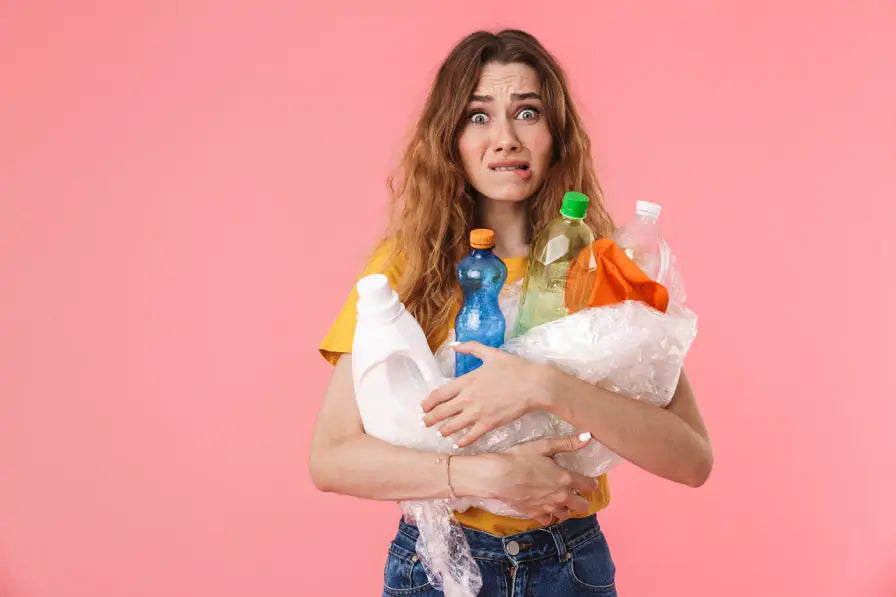Your basket is currently empty.
Shop NowDear Recycling Bins: Perplexing Plastic

Dear Recycling Bins: Our Weekly Recycling Advice Column
Welcome to our weekly advice column where we look at all things recycling and give you the answers you’re desperately seeking.
Dear Recycling Bins,
I read headlines and articles just about every day about the terrible impact of plastic on our planet, yet when I go to dutifully recycle my plastic, I’m confused about what will be accepted by my local council. I know that plastic bottles are fine to recycle, but I use so much more plastic than this. My friend lives in a neighbouring town and she tells me she can’t even recycle her yoghurt pots! So how do I know which plastics I can and can’t recycle?
P.S I try to read labels and decipher whether I can recycle plastic containers or packaging, but I’m only met with confusing abbreviations and numbers which mean nothing to me! Please help!
Yours Sincerely,
Perplexed about Plastic
Dear Perplexed about Plastic,
We sympathise about your confusion around plastic, there are so many different types and grades! You’re right about plastic bottles being easy to recycle; 99% of UK local authorities accept them either in recycling schemes or at recycling centres.
You mention that your friend can’t recycle yoghurt pots. Rigid or mixed plastics like pots, tubs, and trays can be recycled, though there is more work to do in improving the collection, sorting, and processing infrastructure for these materials. Around 79% of councils accept rigid plastics in their collections. Did you know that you can check which plastics your council accepts here?
Now, let’s address your plastic label confusion. When you look at the label, you’ll see an abbreviation and a number, which tells you the type of plastic the container is made from, and its resin code.
If you see PET (or PETE) and number 1: This is Polyethylene terephthalate, or the plastic that’s better known as the one plastic bottles are made from. You’ll find it in fruit punnets and textile fibres too. Recycled PET can be made into fleece, carpets, and new food packaging.
If you see HDPE and number 2: This is High density polyethylene, and you’ll find this in plastic milk bottles, shampoo and cleaning product bottles. These are collected by 92% of councils and they’re recycled into garden furniture, litter bins, pipes, and new milk bottles.
If you see PVC and number 3: This is Polyvinyl chloride, which is found in window frames, drainage pipes, shower curtains, toys, and clothing. This is not generally accepted for recycling, and it’s being used less and less in packaging for this reason.
If you see LDPE and number 4: This is Low density polyethylene, which you’ll find in carrier bags, some containers, and the plastic rings you see around beer and lager cans. This is not generally accepted for recycling, but mixed plastic recycling may be possible within the next 5 years.
If you see PP and number 5: This is Polypropylene, which is found in margarine tubs, bottle tops, waterproof clothing and carrier bags. It’s not generally accepted for recycling; however it may be recyclable widely within 5 years.
If you see PS and number 6: This is good old Polystyrene, which you’ll find in takeaway coffee cups, yoghurt pots, and in the box if you order anything fragile online. This is not usually accepted in household recycling, but sometimes, retailers and manufacturers take it back and reuse it.
If you see Other and number 7: This is basically all other types of plastic including nylon and Perspex. Anything that’s made from a blend of plastics falls into this category. These aren’t generally collected in household recycling.
We hope this helps!
Yours sincerely,
Recycling Bins






